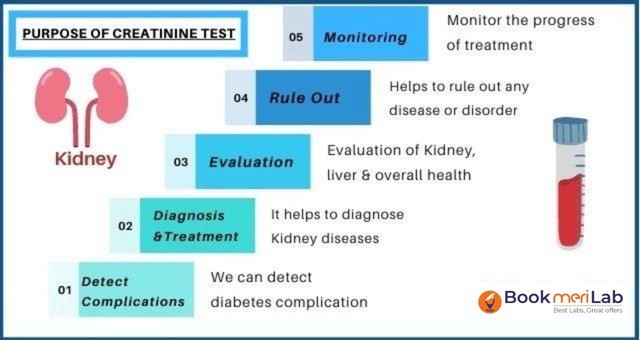Before administering an antibiotic that can cause nephrotoxicity, which laboratory value is most important for the practical nurse (PN) to review?
White blood cell count (WBC).
Serum creatinine.
Hemoglobin and Hematocrit.
Serum calcium
The Correct Answer is B
The correct answer is choice B, Serum creatinine. Choice A rationale:
The white blood cell count (WBC) is an important parameter for assessing the body's immune response to infections. While it can provide valuable information about the presence of an infection, it is not directly related to nephrotoxicity. Therefore, it is not the most important laboratory value to review before administering an antibiotic that can cause nephrotoxicity.
Choice B rationale:

Serum creatinine is a crucial laboratory value to assess kidney function. It is a waste product that is filtered by the kidneys, and its level in the blood is a reliable indicator of kidney function. If the serum creatinine level is elevated, it suggests impaired kidney function, which can be a warning sign of nephrotoxicity. Reviewing the serum creatinine level before administering nephrotoxic antibiotics is essential to ensure that the client's kidneys are functioning adequately and to avoid potential harm.
Choice C rationale:
Hemoglobin and hematocrit are indicators of the client's red blood cell count and blood's oxygen-carrying capacity. While these values can provide information about the client's overall health status, they are not directly related to nephrotoxicity. Therefore, they are not the most important laboratory values to review in this particular scenario.
Choice D rationale:
Serum calcium levels are essential for assessing bone health, nerve function, and muscle contractions. However, they are not directly related to nephrotoxicity, and reviewing serum calcium levels alone would not provide sufficient information about kidney function. Hence, it is not the most critical value to review before administering nephrotoxic antibiotics
Nursing Test Bank
Naxlex Comprehensive Predictor Exams
Related Questions
Correct Answer is A
Explanation
The correct answer is choice A: Tell her to empty her bladder and call if she has a bloody show.
Choice A rationale:
The client is 39 weeks gestation and experiencing mild, irregular contractions. The fact that her cervix is already 3 cm dilated and the presenting part is at -1 station indicates that she is in early labor. Emptying the bladder can help relieve pressure on the cervix and promote progress in labor. Instructing her to call if she has a bloody show is essential because it could indicate that her labor is advancing, and she may need to come to the labor and delivery unit soon.
Choice B rationale:
Directing her to come to the unit for impending delivery is not appropriate at this stage, as she is only experiencing mild, irregular contractions and is likely in early labor. Coming to the unit too early may lead to unnecessary interventions and discomfort for the client.
Choice C rationale:
Asking the charge nurse for further instructions is not necessary in this situation. The client's condition is not emergent, and the practical nurse can handle the situation appropriately based on the information provided.
Choice D rationale:
Encouraging ambulation until the contractions are regular might be beneficial in some cases to promote labor progress. However, given that the client is already 3 cm dilated and experiencing mild, irregular contractions, it's better to address the issue of bladder emptying and potential bloody show.
Correct Answer is D
Explanation
The correct answer is choice D. Cleanse the finger with soap and water.
Choice A rationale:
Explaining the occurrence to the client is not the first action the PN should take in this situation. The priority is to address the potential exposure to bloodborne pathogens and ensure the PN's safety.
Choice B rationale:
Observing the appearance of the injection site is important for routine assessment but is not the first action the PN should take after getting stuck with the used needle. Immediate action to clean the wound site is essential to reduce the risk of infection.
Choice C rationale:
While notifying the charge nurse about the incident is important, it should not be the first action taken. The PN's safety should be addressed first by cleansing the finger.
Choice D rationale:
The PN should first cleanse the finger with soap and water immediately after getting stuck with the used needle. This action helps reduce the risk of infection and contamination. After cleansing, the PN can follow the facility's protocol for reporting incidents and seek necessary medical attention if required.
Whether you are a student looking to ace your exams or a practicing nurse seeking to enhance your expertise , our nursing education contents will empower you with the confidence and competence to make a difference in the lives of patients and become a respected leader in the healthcare field.
Visit Naxlex, invest in your future and unlock endless possibilities with our unparalleled nursing education contents today
Report Wrong Answer on the Current Question
Do you disagree with the answer? If yes, what is your expected answer? Explain.
Kindly be descriptive with the issue you are facing.
